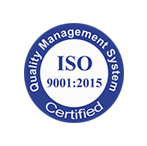The digital revolution is led jointly by Industry 4.0 and Internet of Things (IoT) in order to implement the various digital agendas across the globe. The data provided through IoT aids in monitoring each and every asset of the business from anywhere and anytime. Going down the memory lane around two decades back, it was in 1999 when Kevin Ashton discovered the term ‘Internet of Things’. The original idea was that physical things can be connected to a network for human convenience. In simple language, it was conceived that if computers can automatically sense the surroundings around them and gather facts and provide output accordingly, without any sort of human intervention and the need to feed them data manually every time, it could change the world we live and function drastically.

Let’s consider a simple example of IoT in reference to how it has made human lives easier and convenient. A man, during winters, while driving back to home from his office takes out his Smartphone and turns on the heating system at his home even before he arrives there. Not just this, he even turns on the lights of his bedroom while also simultaneously checking out the refrigerator to ensure what is missing and what he needs to pick up from the supermarket. All of the aforementioned tasks are carried out via the Smartphone while he is in the car and yet to reach home. So, one can clearly understand by this that how deeply IoT has impacted the lives in modern day world and how convenient it has made tasks to carry out. Augmented Reality (AR) and Virtual Reality (VR) also play a substantial role in the functioning of Internet of Things (IoT). Basically, these are integrated into IoT to provide smart solutions like mentioned before.
Augmented Reality- Internet of Things
Virtual Reality- Internet of Things
All the objects such as the heating system, lights and even the refrigerator had one thing in common – Internet. Yes, all of these were connected to the internet and IoT powered all these tasks. IoT facilitates an individual by giving the power of viewing, accessing and analyzing these objects through a simple Smartphone. IoT used sensor output, customer input, service provider availability and knowledge in order to fetch real-time updates and responses from these objects. Though, the accuracy and effectiveness might differ sometimes depending upon the various factors such as internet connectivity, weather and place but most of the times, they are accurate and effective. Such is the magic of IoT.
IoT gave birth to a new term – IIoT (Industrial Internet of Things), which was specially aimed at the industrial sector. IIoT is solely focused on industries while IoT was for commercial sector. Although both have very different scales as IoT uses simple and common devices such as smart home devices, smart cars and smartphones while IIoT relies on smart factories, machines, management systems, and more to streamline business operations. IIoT has taken a big leap from IoT by taking things a step further ahead and implementing this magic to a grander scale. It has led to the invention of Smart factories which has streamlined the business operations and processes in an unprecedented never-thought-before way.
Read More:- Role of Industry 4.0 & Internet of Things in Manufacturing Industry
The Indian market is yet to fully accept and embrace this innovative and contemporary technology to the fullest. However, one thing is certain, once it is fully implemented in India, the market is set to see new heights of glory.












